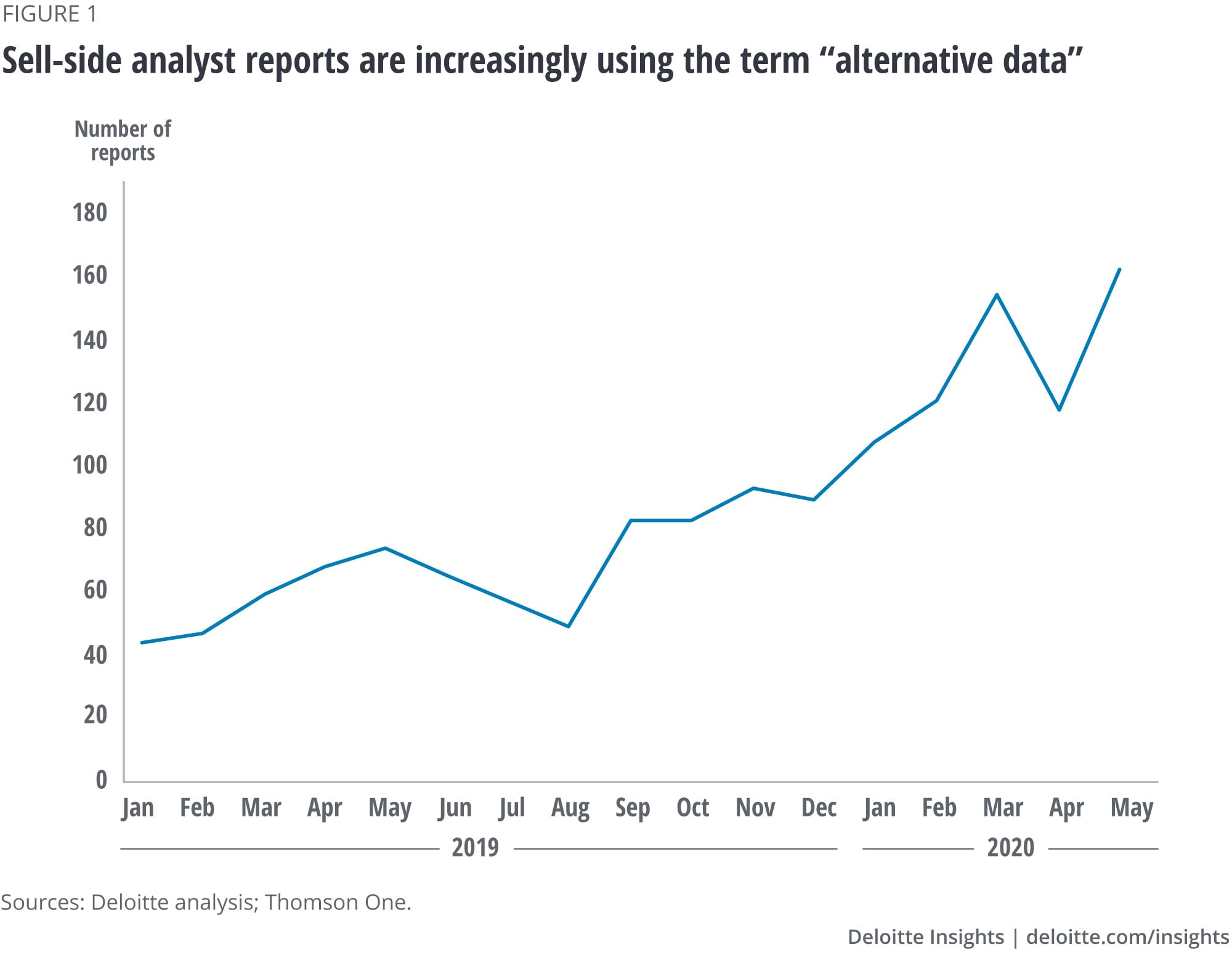
Emerging stronger Investment management operating at the speed of the markets 2.0
8 minute read
25 June 2020
At investment management firms, the COVID-19 pandemic has revealed areas that could be improved. Learn how active investment managers can use digital and advanced technologies to become more responsive and resilient.
Key findings
- Active managers should be up to date with market actions and a potentially accelerated asset re-valuation cycle—even more so during a crisis such as this one. Those who are able to effectively manage risk and generate alpha through periods of volatile market swings have an opportunity to demonstrate their value to clients.
- New digital capabilities can provide timely insight during chaotic periods to support front-office decision-making and client communications.
- Over the past several months, there has been a notable increase in the number of sell-side analyst research reports that contain “alternative data.” As clients become more comfortable with the role of alternative data in the investment process, more sell-side firms are expected to incorporate alternative data into their analyses.
- Firms may benefit most from artificial intelligence (AI) and alternative data if leaders think broadly about their implementation and how to strengthen relationships between the IT and securities analysis parts of the organization.
- Some investment management firms will likely find that adopting natural language processing and generation (NLP/NLG) technologies in their investment process enables them to operate at the speed of the markets even as markets accelerate, allowing them to utilize new types of data and thrive in the “new” normal.
Learn more
Read the 2020 investment management outlook
Explore the Financial services collection
Learn about Deloitte’s services
Go straight to smart. Get the Deloitte Insights app.
Since February 2020, there has been a dramatic shift in the operating environment of financial markets, with increased volatility, repricing of assets, and transitions of favored asset classes. Uncertainty abounds for investment managers. According to one hypothetical stress scenario, individual managers may have seen assets under management fluctuate by up to one-third in the United States as outflows and valuation changes have affected many during the pandemic.1 Even before the emergence of COVID-19, the situation for investment managers appeared ripe for change. In 2019, most US equity managers were unable to generate excess returns, net of fees, relative to their benchmarks. This year began with little to suggest a break from this trend.2
While some active managers achieved alpha in the first quarter of 2020, performance was mixed. 3 In March, many investment managers spent the bulk of their time responding to the effects of the global pandemic on their workforce and business continuity. A s firms begin the transition from responding to recovering, some are focusing on how to emerge stronger and thrive in the future. Volatility in Q1 2020, coupled with a growing recognition that market swings were happening faster than new valuations were being calculated, may force some active managers to allocate precious resources to focusing on the operating model. In a period of crisis, it may be even more important for active managers to stay up to date with market action and a potentially accelerated asset re-valuation cycle. Many clients expect their investment managers to keep up in fast-moving markets.
The COVID-19 pandemic negatively impacted active investment vehicles while sparing the almost exclusively passive exchange-traded fund (ETF) products. During March and April 2020, mutual funds experienced greater net outflows compared with the same months in 2019, while ETFs continued to gather new assets.4 This data suggests that the downturn may have accelerated the shift to passive investing. However, as we have witnessed in other market dislocations, opportunity arises for those who are prepared to seize it. Active managers may have an opportunity to demonstrate their value by managing risk and generating alpha through periods of volatile market swings. For some managers, that means identifying opportunity in relative chaos; for others, it means having the fortitude to stay the course through the storm. In many cases, managers will likely need to do both. Leaders may discover that adding new digital capabilities can provide timely insight during chaotic periods to support front-office decision-making and client communications.
The case for enhancing digital capabilities now
Let’s explore how resilient investment management leaders can focus on enhancing digital capabilities to help their firms thrive.
As investment management leadership teams navigate through this pandemic, they face multiple challenges. Aside from the volatility-driven swings in assets under management, leaders have had to make internal assessments about the performance and resiliency of their investment management operating model. Firms quickly addressed issues such as talent capabilities and client communications, but some are still adjusting their information technology and data capabilities. Those that were able to act on the lessons learned and weaknesses exposed during their response to the pandemic will likely improve both their operating models and operational resilience and be well-positioned to thrive in the next market cycle.5
After ensuring continuity of operations, active management leaders focused on their firms’ investment management operating model, determining what worked well and what needed improvement.6 Armed with that knowledge, many firm leaders have begun to develop plans to adjust operating models, utilize new data sources, and build agility into their investment decision processes. These capabilities can help active managers thrive in the future; they can help the front office make informed investment decisions and communicate confidently to investors about how their unique approach is enabled by technology to operate at the speed of the market, even in times of extreme volatility.
The speed at which information was flowing likely played a critical role: Managers had to quickly make investment decisions to buy, sell, or hold in Q1 2020. The CBOE Volatility Index showed that market volatility was extremely elevated; in March, it reached its highest level since October 2008.7 Digital capabilities are generally best positioned as a tool for investment professionals to implement the investment strategy, not a replacement for judgment. Even managers with long-term investing strategies can utilize real-time information, when there are quick strategic shifts in the market at the asset class and industry sector level. Long-term managers need to be informed in the moment also.

Many investment management firms are still considering or developing these digital capabilities.8 There has been a notable increase in the number of sell-side analyst research reports that contain “alternative data” over the past several months (figure 1). While the number of firms publishing these reports has grown modestly since the start of 2019, it seems to be mostly sell-side firms incorporating alternative data across their coverage areas rather than new firms adopting alternative data as a component of their investment analysis. As clients become more comfortable with the role of alternative data in the investment process, however, more sell-side firms are expected to follow the leaders and incorporate alternative data into their analyses over the coming year.
Predicting black swan events is not the goal of these technologies—that would be too difficult. The goal is to manage through these events. These digital technologies can help make nowcasting—the ability to sense activities related to market or individual name valuations in near real-time—achievable. Internet commerce can be captured and reported daily, international trade can be reported daily, and electronic news can be analyzed in near real time. With collaboration between data scientists and investment professionals, supported by great data and strong analytical tools, investment management firms can operate faster than the news cycle. Keeping up with the speed of the market, or even outpacing it, can also generate information advantage, and subsequently, alpha.
With collaboration between data scientists and investment professionals, supported by great data and strong analytical tools, investment management firms can operate faster than the news cycle.
Beyond the recovery: How technologies can help firms thrive
When evaluating capabilities, investment managers may discover that there are significant gaps between the time information becomes public and when it is utilized in their front office. By deploying advanced technologies, such as AI, firms can speed up existing processes and also perform new functions. NLP/NLG, a form of AI, is one such technology set. NLP/NLG can quantify information that was previously available to analysts only as qualitative input, such as social media posts and management commentary. By linking commentary and sentiment data to financial and market data, trained AI engines can draw quantitative inferences about the veracity and market-moving potential in near real time. In early 2020, some investment managers used NLP/NLG to gain insights related to companies’ COVID-19 responses, information that otherwise would not have been unavailable to them.9
To successfully integrate these technologies into the investment process, firms will likely need to build resilience and flexibility into the organizational design. One way to achieve this flexibility is to ensure technologists and financial analysts collaborate closely, matching technical capabilities to the emerging needs of financial analysts. The technical side needs to know the most valuable problems to solve, and buy-side analysts need to know the potential of the latest AI algorithms and datasets.
Investment management firms may benefit most from AI and alternative data if leaders think broadly about how to implement them and focus on strengthening relationships between the IT and securities analysis parts of the organization. This often requires holistically embracing emerging technologies throughout the investment process and bringing in the people that know them best to help accomplish this. Some possible outcomes from this exercise may be enhanced strategic governance, improved operational control mechanisms, enhanced investment decision-making during crises, and perhaps even cost savings, since new applications of technology can increase efficiency.
To reap the benefits, leaders will likely also need to understand how to utilize these tools in the investment process and interpret the output.10 Some investment management firms will likely find that adopting NLP/NLG technologies in their investment process enables them to operate at the speed of the markets, even as markets accelerate, allowing them to thrive in the “new” normal— and maybe even in the next crisis. Investment managers may also deploy these technologies to help uncover new opportunities for alpha in more traditional datasets. By implementing NLP and machine learning to better understand nonrecurring or special items that are often reported in the footnotes of company filings, analysts may be able to more accurately predict future cashflows, which would lead to better valuation targets.11 This demonstrates how valuable these tools can be even without using alternative data as inputs.
The pandemic has provided investment management firms an opportunity to correct and improve systems and procedures that may operate effectively in docile conditions, but falter under stress. Some have learned that technology has advanced to the point that by improving digital capabilities, sound investment decision-making can happen in much tighter time frames. For active managers, these advances change both the opportunity and their responsibility. They will likely need to explore the compliance, legal, and reputational implications of both the identified lessons learned and the potential changes to the operating model being considered.12
The pandemic has provided investment management firms an opportunity to correct and improve systems and procedures that may operate effectively in docile conditions, but falter under stress.
As leaders of active investment management firms plan for the future, they may need to take a hard look at the heart of their business, the investment decision process. As technology and data advances and customer expectations continue to rise, the acceptable standard for breadth and timeliness of market insights is getting harder to achieve. Has your front office maintained valid, up-to-date, proprietary valuations for the potential investments in each of its active strategies? That is operating at the speed of the market.
© 2021. See Terms of Use for more information.
Explore more
-
Opportunities for private equity post-COVID-19 Article4 years ago
-
2025 investment management outlook Article5 months ago
-
2025 banking and capital markets outlook Article5 months ago
-
Overcoming challenges to cyber insurance growth Article5 years ago
-
Advancing environmental, social, and governance investing Article5 years ago














